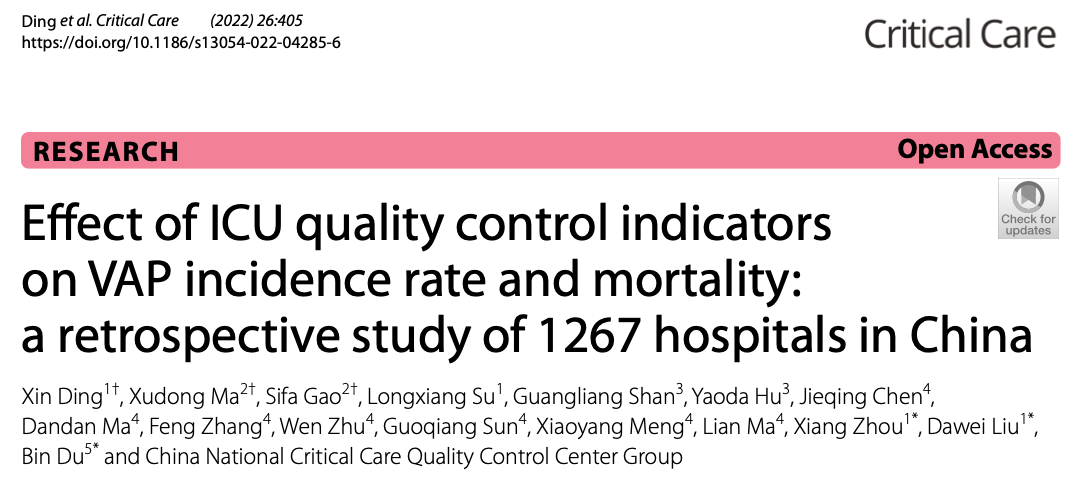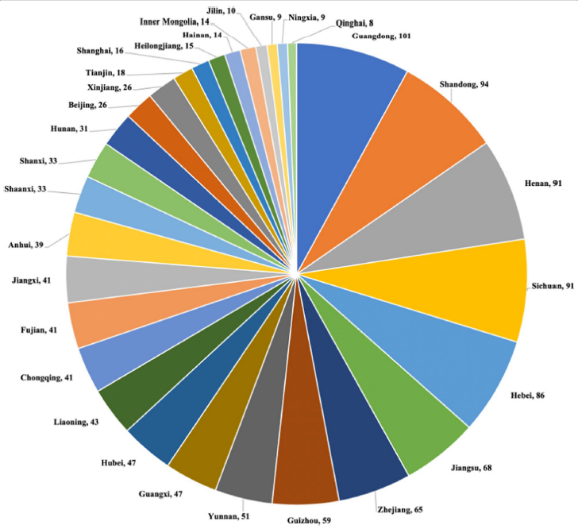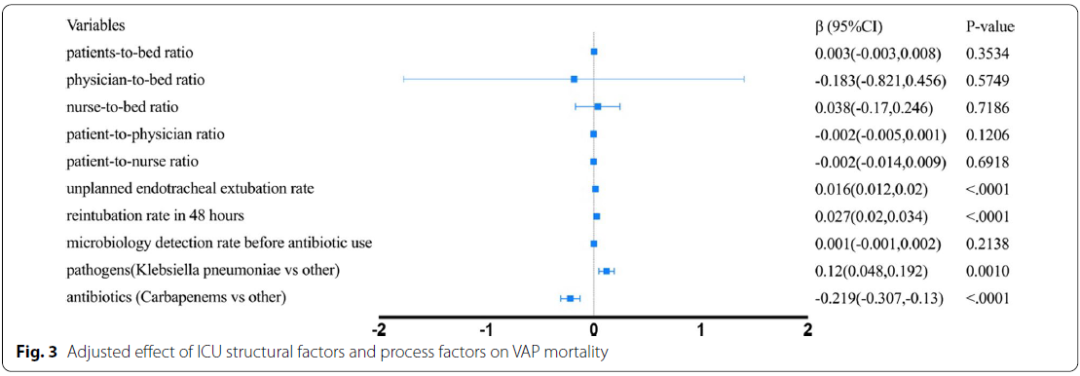Recently, “Critical Care” (IF: 19.344) published an article by the team of China National Critical Care Quality Control Center Group (China-NCCQC group) led by Prof. Zhou Xiang, Prof. Liu Dawei and Prof. Du Bin of PUMCH in the form of original article. The team reviewed the quality control data of 1,267 hospitals in China and found that the ICU quality control (QC) indicators were associated with the incidence rate and mortality of ventilator-associated pneumonia (VAP). The process factors rather than the structural factors need to be further improved for the QC of the VAP in the ICU.
VAP is a type of hospital-acquired pneumonia (HAP) that develops after more than 48 hours of mechanical ventilation or less than 48 hours after extubation. It is one of the most serious nosocomial infections in critically ill patients. The mechanism of VAP is very complex, and has always been one of the difficulties and hotspots in the research of critical care medicine. Previous studies by the research team have shown that specific ICU quality control indicators was associated with patient outcomes.
A total of 1267 ICUs from 30 provinces, municipalities, and autonomous regions in mainland China were included in this study, and 10 related quality control indicators were analyzed, including 5 structural factors (patient-to-bed ratio, physician-to-bed ratio, nurse-to-bed ratio, patient-to-physician, and patient-to-nurse ratio), 3 process factors (unplanned endotracheal extubation rate, reintubation rate in 48 hours, and microbiology detection rate before antibiotic use) and 2 outcome factors (VAP incidence rate and mortality). Meanwhile, The information on the most common infectious pathogens and the most commonly used antibiotics in ICU was also collected.
The results showed that, the incidence rate of VAP in the 1267 hospitals in 2019 was 5.03 per 1000 ventilator days, and the mortality of VAP was 11.11 %. The most common causative pathogen was Acinetobacter baumannii, followed by Klebsiella pneumoniae, Pseudomonas aeruginosa, and Escherichia coli. Third-generation cephalosporin was the most used antibiotic, followed by carbapenem, penicillin and beta-lactamase inhibitor combination, cephalosporin with beta-lactamase inhibitor. All the structural factors were significantly associated with VAP incidence rate, but not with the mortality, although the trend was inconsistent. Process factors including unplanned endotracheal extubation rate, reintubation rate in 48h, and microbiology detection rate before antibiotic use were associated with higher VAP mortality, while unplanned endotracheal extubation rate and reintubation rate in 48h were associated with higher VAP mortality. Furthermore, K. pneumoniae as the most common pathogen was associated with higher VAP mortality, and carbapenems as the most used antibiotics were associated with lower VAP mortality.
The process factors rather than the structural factors need to be further improved for the QC of VAP in the ICU.
This research provides a strong basis for future quality control work. In recent years, the China National Critical Care Quality Control Center Group (China-NCCQC group) has published nearly 20 original articles in SCI-indexed journals in the field of critical care quality control and enjoyed international influence.


Distribution of the hospitals studied among the 30 provinces, municipalities and autonomous regions covered

ICU structural factors and process factors on VAP incidence rate

ICU structural factors and process factors on VAP mortality
